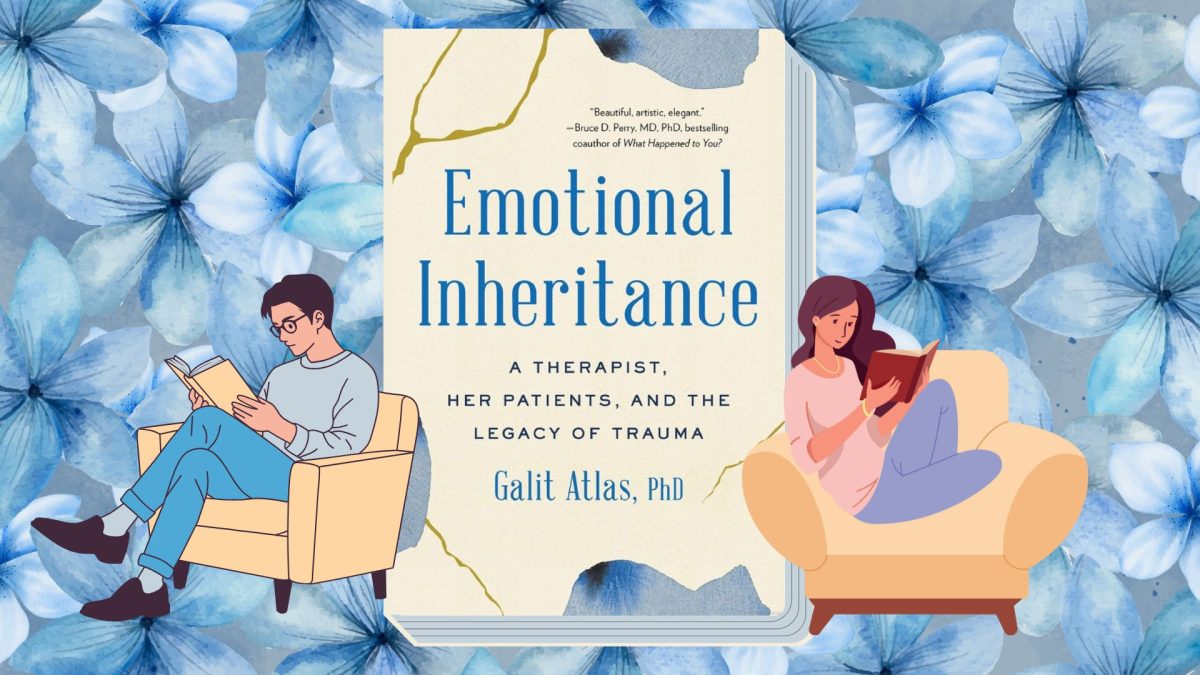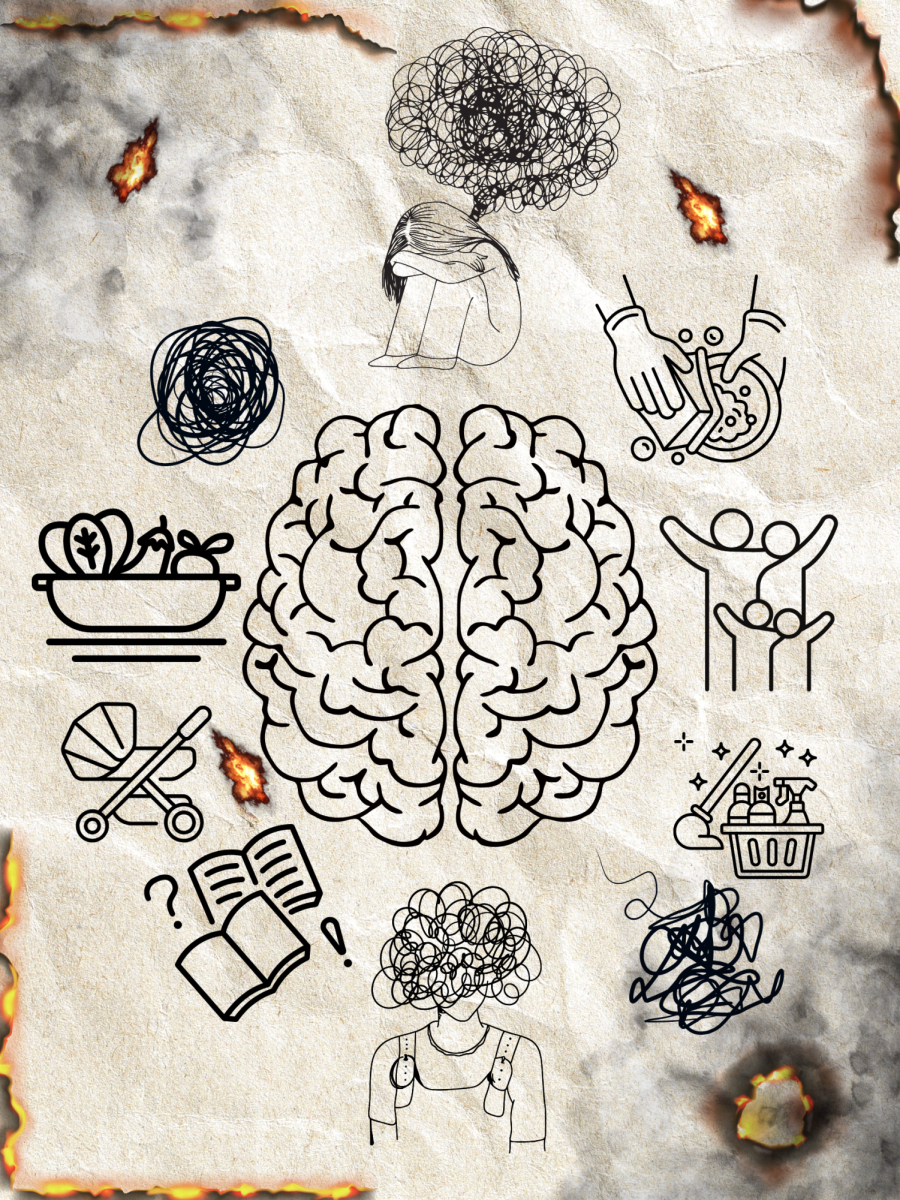Stoicism is a philosophy ideology created in the third century B.C.E. by a man named Zeno. Although the ideology is quite old, it recently started to trend on some teenagers’ social media accounts, but not in the same way ancient stoicism was originally presented.
Over the last couple of months, there has been an increase of stoicism ideals being spread through self-help books, podcasts and all types of social media platforms. Mainly seen on TikTok, you can see influencers, such as @smoothyoki_, posting videos promoting others to live a stoic lifestyle by giving motivational and insightful words. Knowing how influential social media can be on teenagers, modern stoicism can negatively impact how some teenagers think and can start creating the opposite effect of its initial purpose.
Ancient stoicism is a school of philosophy founded in Athens that taught people how to live a virtuous life. The ideology had four main virtues; these were wisdom, courage, temperance and justice. Wisdom would be the stoics’ good sense and resourcefulness, courage is their confidence and high mindedness, temperance would be their self-control and modesty, and justice would be a stoic’s honesty and equity. By following these virtues, stoics believed that it would not only bring them happiness, but also connect them to nature.
The article Stoicism: It’s Meaning and Definition said, “They believed that by turning our gaze inward, we bring awareness to the understanding that our well-being is not defined by external events or fleeting pleasures but by the cultivation of wisdom, courage, justice, and temperance.”
Stoics believed that external events are not what lead to our well-being, but rather by following the four virtues. In this way, stoics build their morals and find a sense of purpose within the world as being aware of what is in their control is their way of coming closer to nature. The same article also said, “When we focus on what we can control, we start to become more effective and efficient, we solve problems more easily, and we suffer less. The key is to accept that there is very little within our control, and the focus of our effort should be on that small patch of land that we own. Our thoughts, our actions, our perspective, and our beliefs.”
Stoics theorized that understanding the limited power we have on our actions and outlook of situations was necessarily in order to refrain from causing trouble. They shift their focus from changing inevitable situations to primarily understanding our own reactions, showing control. With this control in the palm of their hands, it guides them closer to happiness as they are less likely to cause a scene and react out of instant madness.
Carlos Brocatto, a philosophy professor at Santa Ana College gives a positive example of how ancient stoics would think in common situations today.
“When it comes to the stoic decision-making process, one has to consider what is within their control and distinguish it from what is not. I can’t, for example, control some driver who decides to cut me off in traffic, but I can control how I react to what they have done. Rather than think ill of them and getting all angry, or even dangerously vindictive about it, I can practice a stoic exercise and see the situation as unavoidable and perhaps even an opportunity to grow as a person,” he said.
Despite self-control being a good thing, by falsely misunderstanding what we’re able to control, it could lead to depression and frustration as you’re trying to possess control over external factors that are impossible to have power over.
Now, modern stoicism has similar ideas to ancient stoicism. However, instead of it being focused on all virtues the stoics believed in, it primarily focuses on temperance, the endurance of pain and ability to regulate their emotions. It surrounds the idea of trying to overpower your authentic emotions, usually negative, in order to stop yourself from acting foolish and avoiding unnecessary conflict. When presenting this to the media, teens who are looking to improve their lifestyles and mental health will most likely mistake the idea of not acting upon your emotions with hiding them completely.
The main difference between stoicism in ancient and modern stoicism is that the philosophy expresses it as a rich belief system while the modern ideology is seen as naive. It is often, but not always, seen as a misrepresentation for the original philosophy for which it simplifies a complex attitude and focuses on the belief of non-reactivity and the lack of expression leading to happiness. While emotional non-expression and non-reactivity can sometimes be seen as a good thing, centering your life around judgment will soon lead to your “inner self becom[ing] a sanctuary.” The concept of the misrepresentation of the philosophical system is now being demonstrated as essentially a new way of expressing toxic positivity.
Toxic positivity is a type of defense mechanism; it is the act of avoiding all negative emotions and thoughts to give others the idea that everything is going well in their lives. Suppressing your emotions is wrong for many reasons, such as causing long lasting health concerns, disconnection with your peers and the resurfacing of pent up emotions in unhealthy ways. Even though modern stoicism and toxic positivity have completely different purposes, there seems to be a seemingly thin line between them. Due to this, the association of modern stoicism is doomed to having some teenagers grasping the wrong impression.
“Any form of ideology, any form of way of living, philosophies related to living. They can all be hijacked by loud voices and we see this happening in our contemporary political world,” Brocatto said.
No matter what, there will always be teenagers who change ideologies to match what they want to work on, but in this case, it won’t be beneficial for them. Research shows that the Pathak-Wieten Stoicism Ideology Scale, a scale assessment of the ideology, has confirmed negative associations between the stoics’ beliefs and life satisfaction. There was also a positive correlation found linking stoicism to depression. The correlations between these two show that the wellbeing of teens who are easily influenced and consider taking a stoic mindset, will suffer.
Jeffrey Pedroza, a psychology professor at Santa Ana college explains what he thinks stoicism really is.
“Stoicism means different things to different people but basically is a psychological concept. It refers to an expression or emotional state where you are kind of disconnected with having any kind of physical or emotional or spiritual reaction to stimuli and sometimes the stimuli is interactions with people, emotional events, trauma, etc,” he said.
Being disconnected from the stimuli presented is a form of toxic positivity as people are using the defense mechanism of suppressing their feelings. To make matters worse, if the stimulus is a type of trauma, keeping those feelings to yourself and dissociating from them will lead to, once again, health concerns, pent up emotions and acting up once you can’t restrain them any longer.
“Keeping things bottled in. So we hear too many stories of people that explode and sometimes in a violent way or they self-destruct, suicide, and so we wonder what was going on with that person. Well they were always to themselves; they were always kind of quiet. You hear that and it’s like, well why,” Pedroza said.


































